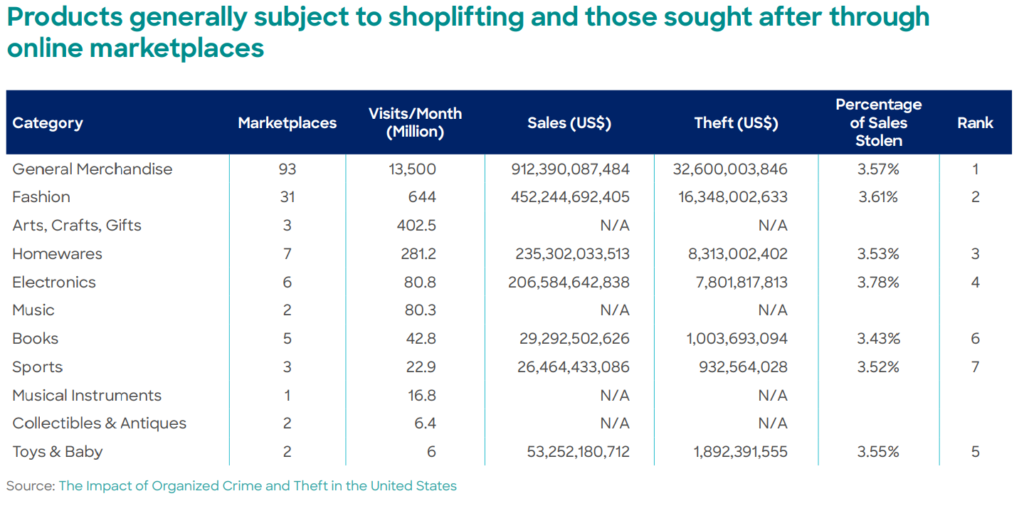
Why Is Organized Retail Crime On The Rise?
By a Biometrica staffer
Is Organized Retail Crime (ORC) really a cause for concern? Isn’t it a victimless crime, as many perceive? The answer to the first question is an emphatic yes, while the answer to the second is an equally clear no. We’ll expand on that in the next section but first, a quick recap of why we’re talking about ORC: Last week, we gave you an introductory look at the new step the Homeland Security Investigations (HSI) and the Association of Certified Anti-Money Laundering Specialists (ACAMS) took recently to combat the growing threat of ORC.
In this piece, we briefly explore why it matters, and possible reasons why ORC is on the rise.
Does It Matter To Us?
Organized crime, in the Federal Bureau of Investigation’s (FBI) words, “poses a significant and growing threat to national and international security with dire implications for public safety, public health, democratic institutions, and economic stability across the globe.” Any kind of organized crime, therefore, is very much a cause for concern.
In our previous piece, we also spoke about the kind of financial damage ORC does to an economy. For example, retail theft costs federal and state governments nearly $15 billion in personal and business tax revenues, not including the lost sales taxes.
ORC is not a victimless crime either, nor one that only financially affects retail store owners. In one survey of retailers, nearly 76% of respondents said a criminal has threatened the use of weapon against an associate. Around 40% of Asset Protection Managers (APMs) who responded to the same survey we mentioned also said that an organized retail criminal has used a weapon to harm an associate.
As recently as last year, a string of brazen burglaries of retail stores, including some that involved dozens of burglars acting together, left experts concerned that the groups behind those were “sophisticated organizations” and not your average shoplifter. What makes ORC darker, as we’ve seen last week, is that the money generated from it is sometimes used to commit more heinous crimes in society such as human trafficking, narcotics trafficking, weapon trafficking, money laundering, and more.
In other cases, the nature of the ORC itself can prove to be a threat to public safety and security: for example, infant formula thefts. Storage condition requirements make the burglary of infant formula a retail theft that could pose a significant health risk to children. If the formula hasn’t been stored
The HSI and ACAMS partnered to publish a comprehensive report on ORC and organized theft groups (OTG) earlier this month, and said this kind of crime has become an increased threat to public safety and economy. The retailer survey we mentioned earlier was prepared for the Retail Industry Leaders Association (RILA) and the Buy Safe America Coalition and cited by HSI-ACAMS in their report.
“Organized retail crime is leading to more brazen, more violent attacks in retail stores throughout the country and many of the criminal rings orchestrating these thefts are also involved in other serious criminal activity. Tackling this growing threat is important to the safety of store employees, customers, and communities across the country,” HSI’s acting executive associate director Steve Francis said in a statement.
What’s Behind The Recent Increase In ORC?
The phenomenon of ORC itself is not new. In 2013, for instance, retail investigators in Oregon busted an infant formula theft ring that had hit stores from Portland to Salem. The culprits allegedly stole about $11,537 worth of infant formula from Safeway stores in Oregon’s Multnomah, Clackamas, Washington and Marion counties and in Washington state on nearly 100 occasions. One of the suspects in this case was a convicted felon who had been arrested 20 times, including on counts of organized retail theft.
Even in 2013, when the internet hadn’t become as ubiquitous as it perhaps has after the Covid-19 pandemic forced people around the world to stay at home, one of the reasons why infant formula theft was lucrative for burglars was that it could be marked down and sold online. In the case we mentioned above, that’s one of the routes the suspects took to sell the stolen formula: i.e. sell it at a lower price on eBay.
Today, online marketplaces are being misused in greater numbers and intensity than in 2013 by criminals to sell stolen goods anonymously, from any location, anywhere in the world. Just as customers of legitimate businesses and brands are ever-increasingly shifting their shopping to online channels and marketplaces, so are criminals. As we’ve seen in several other types of crime, the internet’s convenience and low cost makes it an attractive tool for criminals to exploit.

Another factor behind the recent rise in ORC, the HSI-ACAMS report says, is the raise in felony thresholds for theft in the United States, which essentially decriminalizes the act in an attempt to cope with overpopulated jails. The ease of selling stolen goods online combined with a higher felony bar could be making organized theft “an attractive criminal activity for organized crime groups for funding with little risk,” the report says. Finally, what complicates investigations and, perhaps, emboldens criminals is the increasingly globalized nature of ORC that leads to jurisdictional challenges.
This is the second in a series of pieces Biometrica will do on the comprehensive HSI-ACAMS report. Other pieces in the series will examine the modi operandi and organizational structure of OTGs, the several red flags associated with ORC, and SAR/other AML considerations.